Marjoram: [Cultivation, Irrigation, Associations, Pests and Diseases]
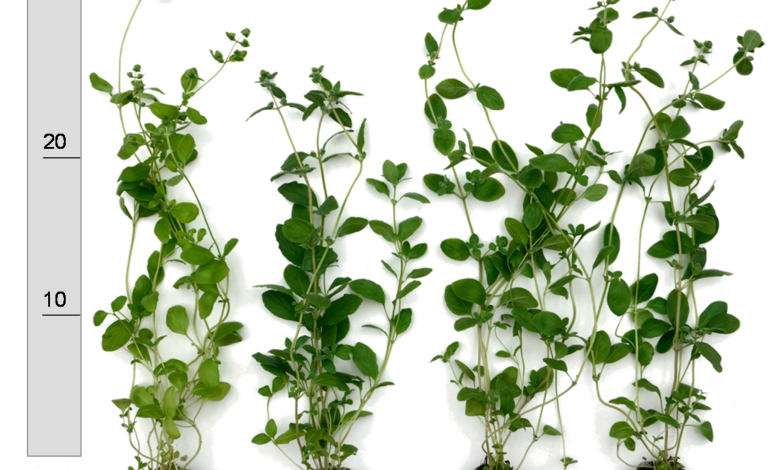
Important points when sowing Marjoram
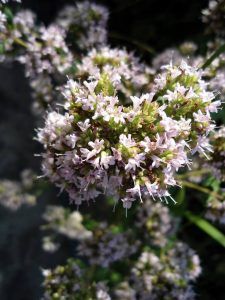 Where to sow? In full light. It needs a lot of sunlight.
Where to sow? In full light. It needs a lot of sunlight.- When? In spring.
- How do we prepare the land? Removed, removing weeds. With substrate such as compost or manure and fertilizers and organic fertilizers.
- How do we water? With drip.
- How often do we water? In summer, every 4 days. The rest of the year very spaced irrigations.
- Plagues and diseases? Aphids, cutworms, molluscs. Alternarias, Sclerotium.
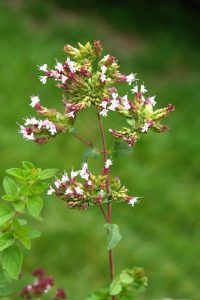 Marjoram is an annual herbaceous plant with an erect and branched stem. It can reach a height of 40 to 50 cm, has opposite and oval leaves, and small pink or white flowers grouped in clusters.
Marjoram is an annual herbaceous plant with an erect and branched stem. It can reach a height of 40 to 50 cm, has opposite and oval leaves, and small pink or white flowers grouped in clusters.
It is a medicinal aromatic plant, which receives the scientific name of origanum majorana and belongs to the Lamiaceae family and gives off a strong and pleasant perfume.
The branches of the plant are of the stormy type, its green-grey leaves, oval, obtuse, entire, about 1.5 cm long with opposite, small pink or white , purple flowers on dense oblong spikes.
It contains tannic, pentosan and bitter principles, as well as minerals; the main substance is the aromatic essence, greenish yellow in color composed of terpenes, terpinene and origanol (about 40%), sabinene and sesquiterpenes in small quantities.
Preferred by the pharaohs in ancient times for its medicinal and aromatic properties, marjoram is also used in gastronomy and ornamentation. It is tonic and stimulating, aromatic, stomachic and antispasmodic and in the Spanish pharmacopoeia it is part of the components of the calm balm.
When to sow marjoram?
Marjoram can be sown in spring from seeds or cuttings.
Preferably, sow directly, forming rows of 25 cm, and covering the seed with a little soil. This way it germinates after 2 or 3 weeks.
Where to do it?
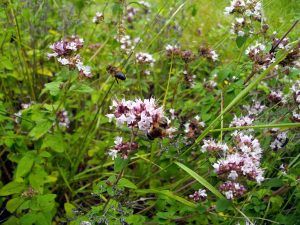 Marjoram grows in warm climates and in sunny, dry areas with well-drained soils. Its ideal climate should be between 10º and 22º C.
Marjoram grows in warm climates and in sunny, dry areas with well-drained soils. Its ideal climate should be between 10º and 22º C.
The most suitable location for marjoram is in semi-shade, although it grows very well in a sunny space. The lowest temperature it supports is -5º C since it is very weak in icy environments.
This aromatic herb has the virtue of adapting very well to climates, whether cold or hot, but it does not support extremes, so it is recommended to keep it in temperate environments.
How to prepare the land?
Marjoram, like the vast majority of herbs, grows well in soils that have a pH between 5.5 and 7.5 as long as they are not saline.
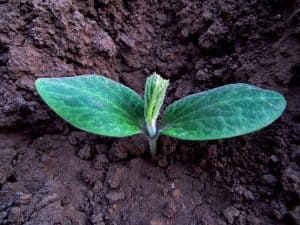 A very good preparation of the land is necessary for the cultivation of herbs. In the case of marjoram, loamy –sandy–humiferous soils are required.
A very good preparation of the land is necessary for the cultivation of herbs. In the case of marjoram, loamy –sandy–humiferous soils are required.
As preparation of the land for planting marjoram, it is recommended to clean the furrows and remove the weeds.
If there is not enough organic matter in the soil for the cultivation of marjoram, the deficiency must be covered by incorporating fertilizers and/or organic fertilizers, such as manure.
In the preparation of the land for crops, it is important to carry out a previous study of the soils to know their real conditions in relation to the nutrients and chemical conditions that favor or affect said availability.
How do we water marjoram?
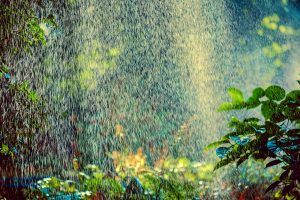 The watering of the marjoram plant during its early years, as well as in its adult stage, should be moderate, tending to minimum amounts of water to avoid damaging the plants.
The watering of the marjoram plant during its early years, as well as in its adult stage, should be moderate, tending to minimum amounts of water to avoid damaging the plants.
Does not tolerate aqueous environments. The cultivation of marjoram can be watered every 4 days, during the summer as it prefers dry soils and in winter more spaced irrigation.
In outdoor plants, watering should be done first thing in the morning. In this way the water will be better used by its roots. Using sprinklers or diffusers to water, will be the most recommended to avoid fungi.
How do we plant a marjoram step by step?
The sowing of the marjoram can be done directly in the soil, in seedlings and/or in pots. Depending on the seed or cutting to be used, sowing can take place in the following way:
Planting by seeds
- Open 25 cm furrows, and cover the seeds with a little soil.
- Germination will occur in 2-3 weeks.
- To promote germination in cold soils, where it can take a month, it is advisable to first warm the soil, keeping it covered.
- Water when the soil is dry, although when the plant is well developed it withstands drought well.
Planting by cuttings
- Select the container where the marjoram is going to be planted.
- Impregnate or wet the base of the cutting or stake, 2 or 3 cm, with rooting hormones in powder or liquid to promote rooting.
- Plant the cutting or stake in covered containers.
- Use a mixture of substrate composed of sand with peat in equal parts.
- Water, without flooding
- Locate the plant in a sunny spot.
What favorable associations does it have?
The association of crops of compatible plants produces benefits with respect to their cultivation separately, in addition to the use of light, water and/or nutrients.
Marjoram can be associated with other aromatic or medicinal plants of the same species, including oregano.
What pests and diseases attack marjoram?
 In general, few insects attack medicinal and aromatic plants such as marjoram.
In general, few insects attack medicinal and aromatic plants such as marjoram.
However, the presence of aphids, cutworms, molluscs, slugs and beetles have been observed.
Among the diseases caused by fungi, Alternaria and Sclerotium attacks are mentioned as the most abundant.
Pests and diseases of marjoram abound especially in times of high temperatures and periods of heavy rains, in soils with poor drainage and poor aeration. For the control of insects in marjoram, biological means are recommended, such as:
- Aqueous extract of Capsicum sativus for spraying.
- Aqueous extract of Allium sativus by spray.
- Trichogramma sp (by spraying).
- Bacillus thuringiensis (sprinkler fungus).
The control of diseases that could be caused by fungi in marjoram can be carried out with: Ricinos communis (in infusion by spray) and/or Nicotiana tabacum (aqueous extract for spray).
Bibliography and references
- Encyclopedia My first knowledge about Plants, Snakes and Conservation. (1961). Spanish edition by Dr. Frank Thompson. Grolier Publisher Incorporated New York. Printed in Mexico.
- Frets Francis. (2010, May). Medicinal and aromatic plants: An alternative production. USAID, Paraguay sells. PDF.
digital database
- Ecured.com. Marjoram. Reproduced from: https://www.ecured.cu/ Mejorana
- Joseph the Gardener . Irrigation errors. Reproduced from: https://www.joseeljardinero.com/errores-al-regar-las-plantas/
- Gastronomy and company.com. Marjoram. Reproduced from: https://gastronomiaycia.republica.com/2010/02/16/mejorana/
- Mejorana.net. Cultivation of marjoram at home. Reproduced from: https://www.mejorana.net/cultivo/

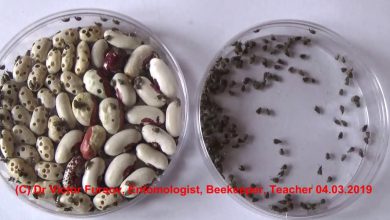
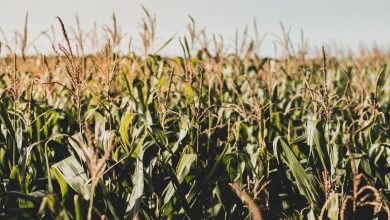
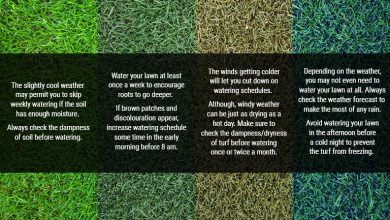
![Photo of Surface Irrigation: [Concept, Advantages, Disadvantages and Requirements]](https://www.complete-gardening.com/wp-content/uploads/2022/08/surface-irrigation-concept-advantages-disadvantages-and-requirements.jpg)